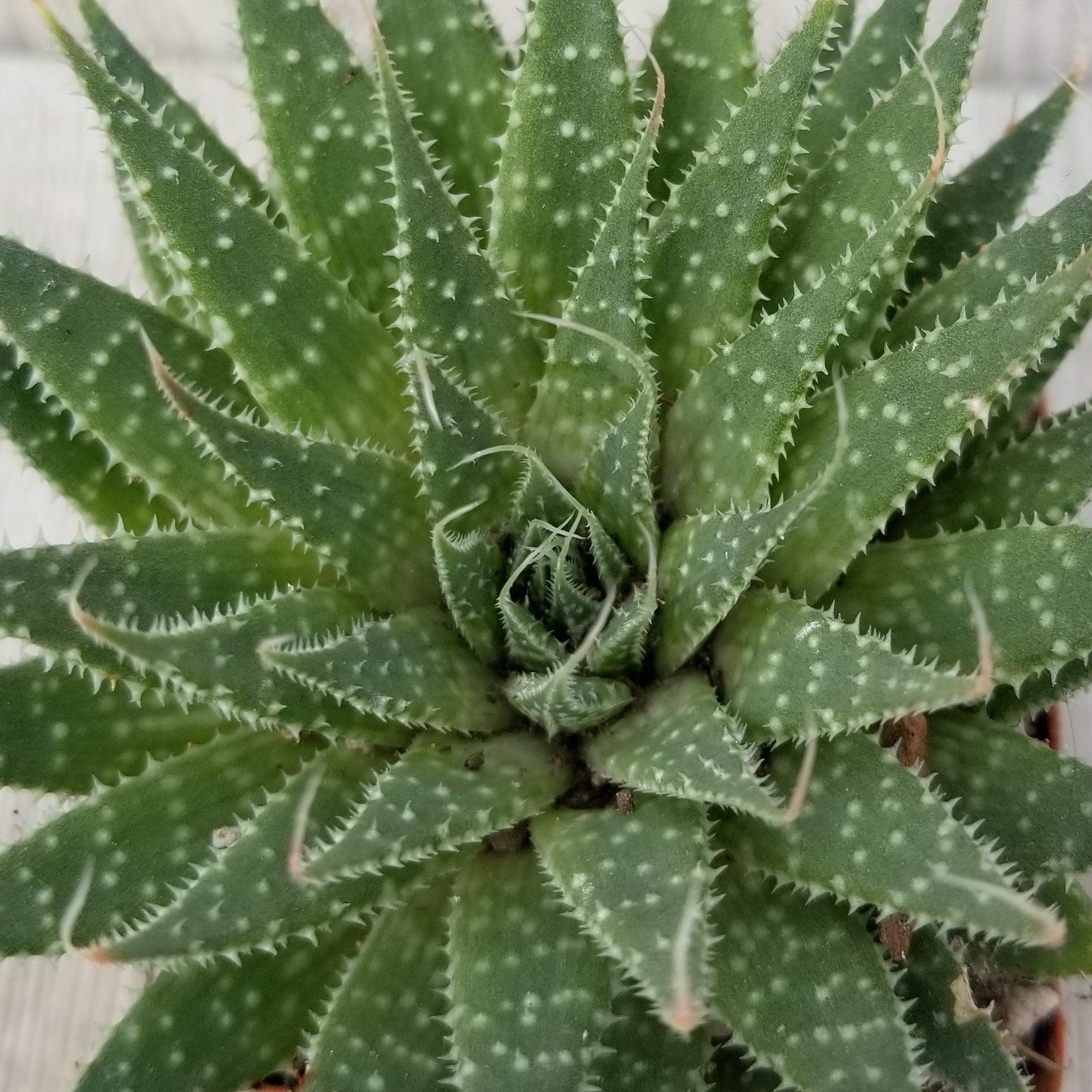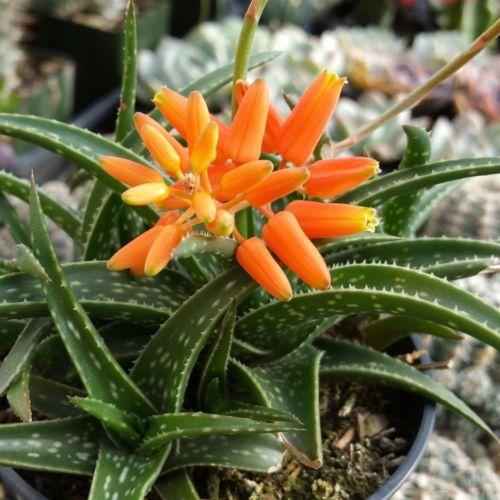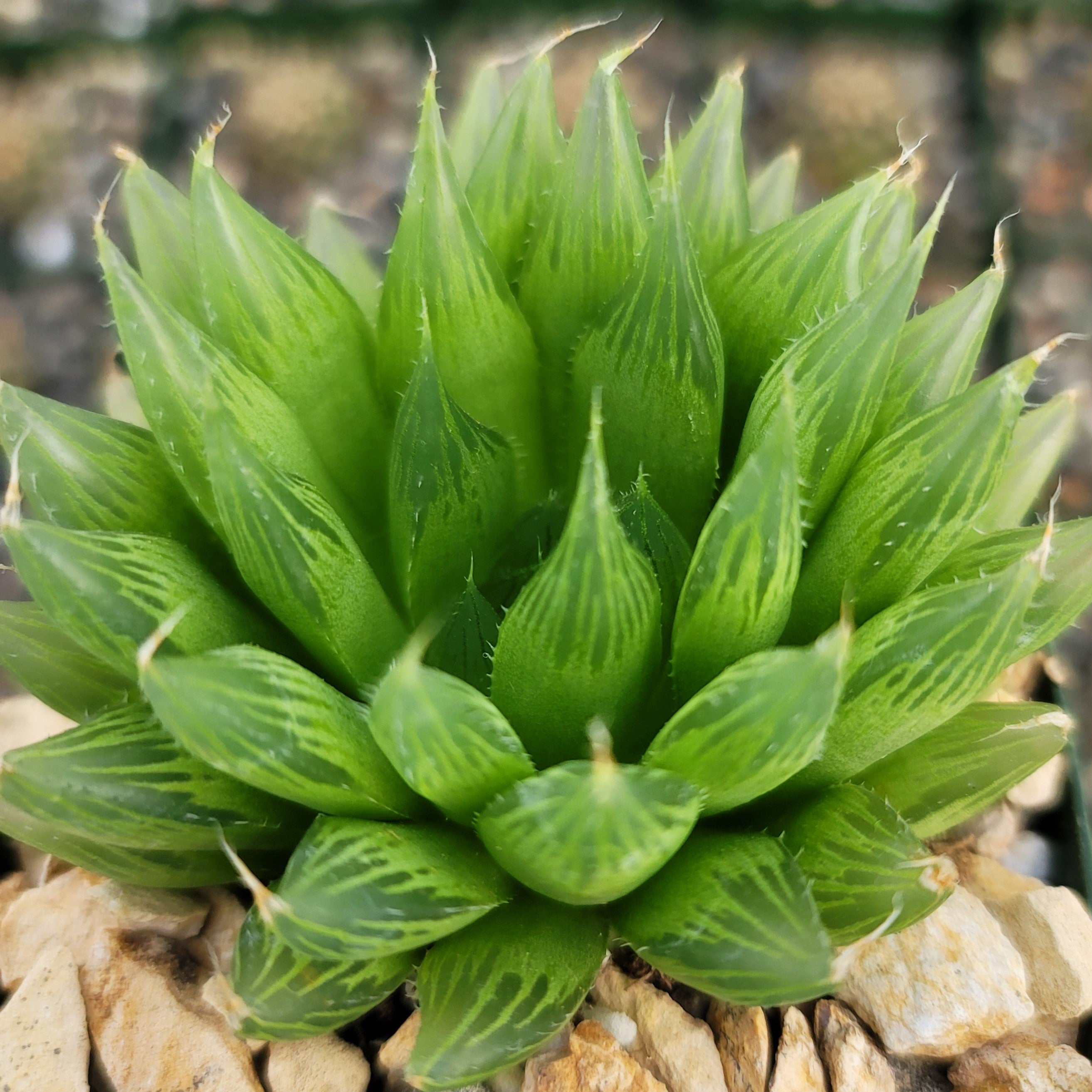Grafted Cactus - Everything You Need To Know!
Updated: January 28, 2025

Grafted cacti are a fascinating plant hybrid created by joining two different cactus species together. This unique combination results in a stunning and resilient cactus that showcases the best qualities of both varieties. Additionally, it is a cute yet low-maintenance plant that is perfect to give your garden a much-needed lift.
Whether you're an experienced cacti collector or just starting out with your green thumb - keep reading for all the top tips on caring for your new grafted cactus beauty, with a complete process and types.
What is a Grafted Cactus?
A grafted cactus is formed when two different species of cacti are combined together to form a single plant. A majority of people often get confused by seeing the colorful top of these plants and perceive them to be flowers. However, not many know, they are actually grafted cacti.

It is interesting to note that the top cactus is called the ‘Scion’.
These mutant variations of standard cacti are colorful and attractive.
The green bottom cactus, on the contrary, is known as the ‘Rootstock’. Mutant pups are grafted on rootstock plants, giving an altogether unique appearance to the cactus plant.
The plant on top actually uses the energy and nutrients from the plant below to grow faster and more vigorously than it would on its own.
It's like a power boost for the top cactus.
By grafting, cacti enthusiasts and growers can combine the desirable traits of different cactus species, creating stunning hybrids with vibrant colors, unique shapes, and even different flowering patterns.
A full-grown grafted cactus can reach up to a height of 2 to 3 inches, making them look tiny and compact. As these colorful plants lack chlorophyll, they fail to prepare their own food through photosynthesis. Thus, the cactus needs to be grafted onto another cactus to gain the necessary nutrients and survive for years to come.
Why to Graft a Cactus?
Grafting a cactus can result in a stronger, more resilient plant with unique characteristics. It can also allow for the combination of different cactus species to create a visually appealing and diverse collection. Grafting is done for a number of reasons that are following as:
- Increased Survival Rate: Sometimes, the mutant pups get detached from their mother plant. As a result, they die due to the lack of chlorophyll. To help them survive, grafting is done. By attaching them to rootstock plants, they get all the essential nutrients and grow happily.
- Unique Aesthetic: Grafting creates the highly unusual look of your cacti, that makes them a must-have showpiece for any living room or garden.
- Grow Much Faster: Grafted cacti can reach maturity more quickly compared to non-grafted ones, allowing for earlier enjoyment of their beauty.
- Can Create Unique Varieties: Grafting allows plant enthusiasts to experiment and create their own unique cactus hybrids, adding a creative touch to their collection.
- Conservation: Grafting can help preserve rare or endangered cactus species by propagating them through grafting techniques.
These additional reasons highlight the benefits and appeal of grafted cacti.

Exploring Popular Rootstocks and Scion Varieties for Grafted Cacti
Grafted cacti are a popular choice for plant enthusiasts looking to create visually striking arrangements. Growers can achieve a wide range of colors, shapes, and textures by selecting the right rootstock and scion varieties. Experimenting with different combinations can showcase the beauty and diversity of these fascinating plants.
Best Cacti that Can Commonly Used as Rootstock:

Harrisia jusbertii
This cactus is commonly used as a rootstock for grafting because of its strong and sturdy stems. It provides excellent support for graft unions and allows for successful fusion between different cactus varieties. Learn more....

Golden Torch Cactus (Trichocereus spachianus)
This golden torch cactus is a popular choice as a rootstock in grafting due to its rapid and vigorous growth. It has long, columnar stems that make it easy to graft multiple scions onto a single rootstock. Learn more....

Peruvian Apple Cactus (Cereus repandus)
With its robust growth habit and adaptability, it is often selected as a rootstock for grafting cacti. It forms a solid foundation for graft unions and promotes healthy growth in the grafted scions. Learn more....

Dragon Fruit (Hylocereus undatus)
These Dragon Fruit cacti are occasionally used as rootstocks in grafting cacti. They have strong, climbing stems that provide stability and support for successful grafting. Learn more....

Powder Puff Cactus (Mammillaria bocasana)
While not as commonly used as other varieties, Mammillaria bocasana can serve as a rootstock for grafting certain cactus species. Its clumping growth habit allows for multiple graft unions on a single rootstock. Learn more....

Blue Myrtle Cactus (Myrtillocactus geometrizans)
This blue myrtle cactus is sometimes utilized as a rootstock in grafting due to its fast growth and hardiness. Its columnar shape provides a suitable base for grafting different cactus scions. Learn more....
Best Cacti that Can Commonly Used as Scion:

Moon Cactus (Gymnocalycium mihanovichii)
This is a species of cacti commonly used as a scion. The Moon cactus is a popular grafted specimen. It has colorful yellow, red, or orange tops due to the lack of chlorophyll. As they cannot survive on their own, these cacti are grafted onto a rootstock plant. Also known as the Ruby ball cactus, this species is low-maintenance and thrives with little care. A full-grown Moon cactus can grow up to 4 inches tall. Once they reach their maximum height, they usually stop growing furthermore. Learn more....

Sand Dollar Cactus (Astrophytum asterias)
This scion variety features striking star-shaped patterns on its surface, making it a visually appealing choice. Learn more....

Old Lady Cactus (Mammillaria hahniana)
With its dense clustering growth habit and cute white spines, this scion adds a charming touch to grafted cacti. Learn more....

Orange snowball cactus (Rebutia muscula)
This scion variety produces lovely, colorful flowers and has a compact growth habit, making it suitable for smaller grafting projects. Learn more...
Where to Find Already Grafted Cactus
If you don't want to Graft Cactus yourself then check out our large selection of already Grafted Cactus here at Planet Desert.
Finding the Perfect Season to Graft Your Cacti
When it comes to grafting cacti, there isn't a specific "best" season that applies universally. However, there are a few factors to consider when deciding on the timing for grafting your cactus.
- Firstly, it's generally recommended to graft cacti during their active growing season. For most cacti, this occurs during the spring and summer months when the temperatures are warmer and there is an abundance of sunlight. Grafting during this time allows the cactus to recover and establish itself more easily.
- Secondly, it's important to choose a time when both the scion (the top part) and the rootstock (the bottom part) are in a healthy condition. Ensure that both plants are actively growing and free from any signs of disease or stress.
- Lastly, it's worth noting that some cactus species may have specific preferences for grafting. For instance, certain species might prefer to be grafted during their dormant period in the winter. It's always a good idea to do some research on the specific cactus species you're working with to determine any unique requirements or recommendations for grafting.
Remember, successful grafting relies on providing the right conditions and care for the cacti involved. So, take your time, choose a suitable season, and enjoy the process of creating your own unique cactus hybrids!

How to Graft Cactus?
Grafting a cactus is not only a doable activity, but it also brings out your creative side. If you are a beginner gardener, it is best to start with a small cactus that can be handled without any problem.
Four Methods to graft cactus:
- The Lateral or Flat Graft: It involves joining a small branch or bud from one plant onto the side of another plant's stem. It's like giving a plant a new arm.
- The Side Graft: This method is similar to lateral grafting, but instead of attaching the branch to the side, it's attached to a cut made on the side of the stem. It's like giving a plant a new friend to hang out with.
- The Cleft Graft: This technique involves making a vertical cut in the stem of the rootstock and inserting a scion (a small branch or bud) into the cleft. It's like giving a plant a new sibling.
- The Stat Graft: Also known as whip and tongue grafting, it involves making diagonal cuts on both the rootstock and scion, then joining them together. It's like giving a plant a high-five with a new buddy.
In all the above-mentioned techniques, the positioning of the scion is different. Out of all, the Lateral graft is easier as well as more effective.

Tools for the process:
- A sharp blade or a grafting knife
- Rubber bands (to bring the two species together)
- A pair of gloves
Steps involved in grafting:
- To begin with, cut the top of the rootstock plant by using a clean, sterilized knife or blade. Make sure to cut at least two to three inches above the soil. Besides, the wound should be neat and smooth.
- Now, take another cactus that you want to graft on top of it. Select a healthy segment and cut it off the cactus to create a scion. Ensure the cut part of both the scion and the rootstock have similar diameters so that the two can be easily placed.
- Put the scion on top of the wound of your rootstock plant so they can seal together. The contact takes place at the vascular cambium where the cut of the two species meets.
- Secure the sections together by using some rubber bands all the way from top to bottom and even on the sides of the pot.
- In around two weeks, you will observe the scion starts growing. You can remove the rubber bands at this stage as the two species have now become one small plant.
How to Take Care of a Grafted Cactus?
Taking care of a grafted cactus is pretty similar to caring for other cacti, but there are a few extra things to keep in mind.
Quick Reference

Bloom Season

Flower Color

Growth Rate

Hardiness Zone

Mature Size

Plant Type

Sun Exposure

Toxicity

Watering Needs
Understanding the Light Requirements of Grafted Cacti
When it comes to the light requirements for your grafted cacti, starting with indoor growing and then moving on to outdoor growing.
Indoor Growing
When growing grafted cacti indoors, it's important to provide them with bright, indirect light. Place your cactus near a south-facing window where it can receive several hours of sunlight each day. If you don't have a sunny window, you can use artificial grow lights, such as fluorescent or LED lights, to supplement the natural light. Keep the lights on for about 12-14 hours a day to mimic the daylight hours.
Outdoor Growing
Grafted cacti do prefer partial shade when growing outdoors. While they can tolerate full sun, providing them with some shade during the hottest parts of the day can help prevent sunburn and keep them happy and healthy. So, finding a spot that offers a balance of direct sunlight and partial shade would be ideal for your grafted cactus in an outdoor setting.
Pro Tip
These plants can be sensitive to drastic shifts in light levels. If you're moving your cactus from indoors to outdoors or vice versa, start by placing it in a shaded area for a few hours a day, gradually increasing the exposure to sunlight over a week or two. This will help prevent stress and potential damage to the cactus.
Unveiling the Watering Needs of Your Grafting Cactus
When it comes to watering grafted cacti, using a spray bottle can be a great method. It allows you to control the amount of water you're applying and helps prevent overwatering.
Mist the soil around the base of the cactus rather than directly watering the plant.
This method mimics the gentle rainfall cacti would receive in their natural habitat.
During the growing season, you should water your cactus when the top inch of the soil feels dry. Be careful not to overwater, as excessive moisture can lead to root rot. It's better to underwater than to overwater your cactus.

In the dormant season, grafted cacti require less water. Reduce watering frequency and only water when the soil is completely dry. Remember, cacti are adapted to arid conditions, so they can tolerate periods of drought.
Pro Tip
Cacti can benefit from being placed outside during warm summer rains. Rainwater is often rich in nutrients and can provide a natural boost to your cactus's growth. Just make sure to bring your cactus back inside if there's a risk of frost or extreme weather conditions.
Nurturing Grafted Cacti With the Perfect Soil and Fertilizer
Choosing the right soil and providing proper nutrients is crucial for their growth and health. Grafted cacti thrive in well-draining soil that mimics their natural habitat. A mix of cactus potting soil and perlite or coarse sand works well. This combination allows excess water to drain away, preventing root rot. Instead, make or buy a well-draining potting mix, or ideally use our specialized potting mix that contains 5 natural substrates and mycorrhizae to promote the development of a strong root system that helps your grafted cactus to thrive.
Grafted cacti have modest fertilizer needs. During the growing season, in the spring, you can use a balanced (5-10-5), water-soluble NPK fertilizer specifically formulated for cacti. Dilute the fertilizer to half the recommended strength and apply it once a year. Remember, less is often more. It's better to err on the side of caution and provide slightly less fertilizer than you think is necessary. Over-fertilizing can lead to excessive growth, weak stems, and even damage to the plant.
Pro Tip
Fertilize your plant with a cactus fertilizer during its active growing season. However, do not feed during their dormancy period.
A Guide to Grafted Cacti Ideal Temperature
When growing indoors, your grafted cacti generally prefer warm temperatures, ideally between 65°F and 85°F. They can tolerate slightly cooler temperatures during the winter months, but it's best to keep them away from drafts and cold windows.
For outdoor cultivation, grafted cacti are typically hardy in zones 9 to 11, which include regions with mild winters and warm climates. They can handle higher temperatures, but it's crucial to protect them from extreme heat and direct sunlight, especially during the hottest parts of the day. The rootstock of your grafted cacti is frost-sensitive. Thus, if you live in areas that get colder during certain months, it is better to bring them indoors.
They are adapted to arid environments and prefer low humidity levels. Indoor humidity is usually not a concern, but if you live in a particularly humid area, you can improve air circulation around the plant or use a dehumidifier to create a drier environment.
Pro Tip
To transition your grafted cactus between indoor and outdoor environments, gradually acclimate it by placing it in a shaded area for a few hours daily and gradually increasing sunlight exposure over time.
Navigating Challenges with Grafted Cacti

Rootstock Rejection: Sometimes, the rootstock and scion may not form a successful graft union, leading to rejection. This can happen if the two varieties are not compatible or if proper grafting techniques were not followed.
Disease and Pests: Grafted cacti, like any other plants, can be susceptible to diseases such as fungal infections or bacterial rot. Additionally, pests like mealybugs or spider mites can attack the plants, causing damage to the graft.
Sunburn: Grafted cacti, especially those with colorful scions, may be more sensitive to intense sunlight. Excessive exposure to direct sunlight can lead to sunburn, causing discoloration or even tissue damage.
Overwatering: Cacti are known for their ability to thrive in dry conditions, so overwatering can be a common problem. Too much water can lead to root rot and other moisture-related issues.
Improper Care: Lack of proper care, such as incorrect watering, inadequate light, or poor soil conditions, can result in stunted growth, weak graft unions, or overall decline in the health of the grafted cactus.
Remember, with proper care, monitoring, and addressing any issues promptly, you can help ensure the health and longevity of your grafted cacti.
Where to Buy a Grafted Cactus?
When it comes to buying a grafted cactus, you might be able to find it at a local nurseries or garden center in your area that specializes in succulents and cacti. But Planet Desert is your easiest and best option if you're looking to buy affordable cacti online and have them conveniently shipped right to your door!
Here at Planet Desert, we have a large selection of over 500 cacti & succulents in stock and we guarantee they will arrive happy and healthy.
You can buy a popular grafted moon cactus here, as well as other popular cacti for rootstock and scion to graft your own cactus.
Final Thoughts
Overall, the grafting cacti is a fascinating and creative process that allows plant enthusiasts to create unique and visually stunning botanical masterpieces. By combining different rootstock and scion varieties, such as the popular moon cactus with its vibrant colors, or other rootstock variants like Harrisia jusbertii or Trichocereus spachianus, the possibilities for creating personalized cacti are endless. Grafting offers the opportunity to experiment with various features, from the star-shaped patterns of Sand dollar cactus to the clumping growth habit of Powder puff cactus.
To care for grafted cacti, it's important to provide them with adequate sunlight, well-draining soil, and occasional watering. These plants thrive in bright, indirect light and prefer to dry out between waterings to prevent root rot. With proper care and attention, grafted cacti can flourish and continue to captivate with their unique characteristics. So, whether you're an experienced gardener or a beginner, unleash your creativity, experiment with different combinations, and enjoy the beauty of your one-of-a-kind creations.
Frequently Asked Questions
-
How long do grafted cactus live?
On average, grafted cacti can live anywhere from 10 to 20 years or more. Just like any living organism, the lifespan of a grafted cactus can vary. While some grafted cacti can live for several decades, others may have a shorter lifespan. It all depends on factors such as the species of cactus, the care it receives, and its growing conditions.
-
Does grafted cactus grow faster?
Yes, grafted cacti can often grow faster compared to non-grafted cacti. This is because the scion, which is the top part of the graft, is usually a faster-growing variety. By grafting the scion onto a compatible rootstock, the cactus can benefit from the rootstock's robust root system and nutrient uptake abilities. This allows the scion to grow more vigorously and potentially results in faster overall growth.
-
How big do grafted cactus get?
Grafted cacti can grow up to 3 inches tall and wide depending on the specific species and care they receive. Some grafted cacti can stay small, reaching heights of a few inches or up to a foot. Others can grow much larger, with some species reaching several feet in height. It really depends on the type of cactus you have or are interested in.
Why is the Moon Cactus Ideal to Graft?- The Ruby ball cacti prefer partial shade to survive. They cannot tolerate harsh direct sunlight as it causes sunburn.
- This variety of cactus needs occasional watering. During the summer months, water frequently. However, reduce it during Make sure to let the soil dry out in order to avoid the chances of root rot. Your Moon cactus may become squishy if overwatered.
- The Ruby ball cactus grows well in rich, well-draining soil with low pH. The soil mix should be ideal to meet all the requirements of the bottom cactus. These plants do not ask for frequent fertilization. Fertilize once a year during the active growing season of spring with the right cacti fertilizer to see them thrive.
- The scion section of your grafted cactus belongs to the hardiness zone of 11 to 12. Rootstock plants, on the other hand, are hardy in zones 8 or 9. During the colder months, it is recommended to keep your cactus in a setting with a temperature range between 50 to 60° F. In addition, grafted cacti prefer low humidity levels.
- Most plant lovers wonder how to propagate Moon cactus. However, as these plants are grafted, they are not suitable for propagation. In case you observe the top part getting detached from the bottom section, you can consider re-grafting your Moon cactus.


























